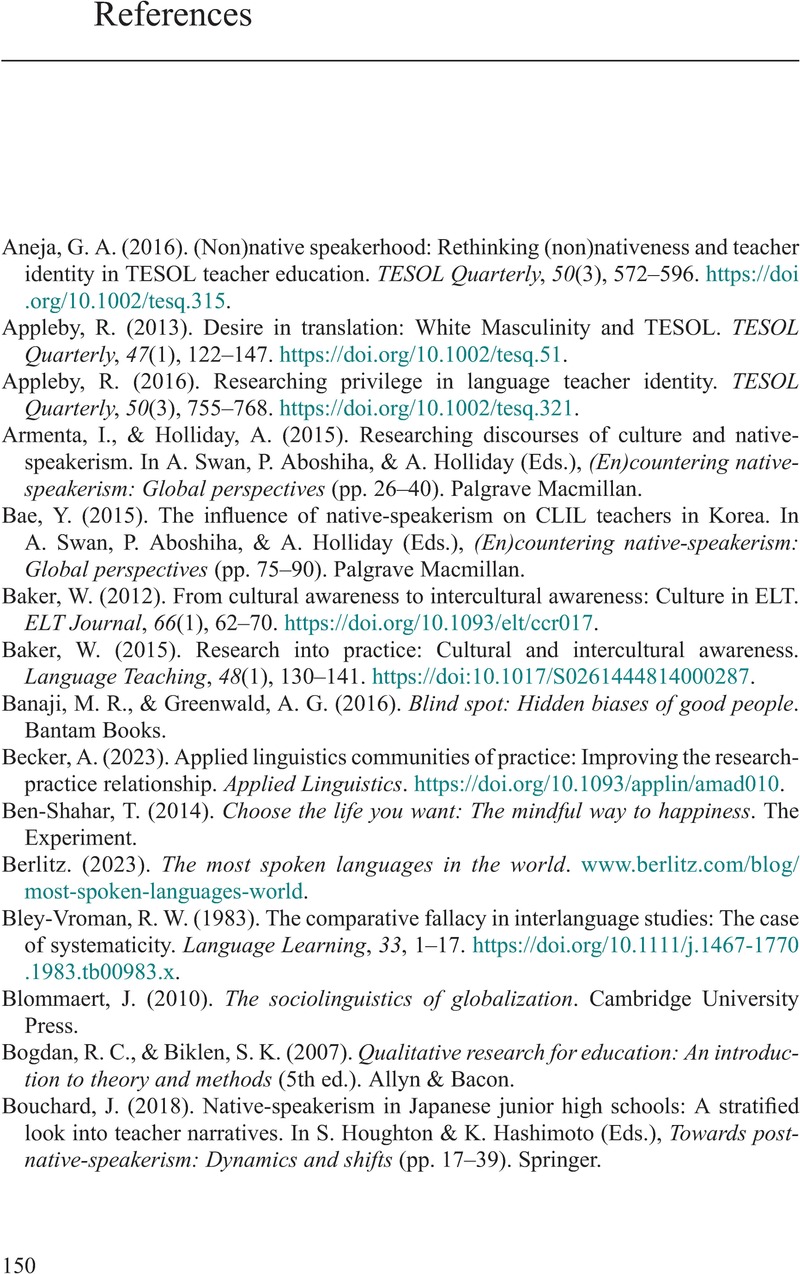Book contents
- Native-Speakerism and Trans-Speakerism
- Native-Speakerism and Trans-Speakerism
- Copyright page
- Contents
- Figures
- Tables
- 1 Introduction: Where It All Began
- 2 Well-Trodden Path: Native-Speakerism
- 3 Untrodden Path: Trans-Speakerism
- 4 Voices of Secondary School Teachers
- 5 Voices of Graduate School Students
- 6 Voices of University Professors
- 7 Conclusion: Where It All Begins (Again)
- References
- Index
- References
References
Published online by Cambridge University Press: 31 August 2024
- Native-Speakerism and Trans-Speakerism
- Native-Speakerism and Trans-Speakerism
- Copyright page
- Contents
- Figures
- Tables
- 1 Introduction: Where It All Began
- 2 Well-Trodden Path: Native-Speakerism
- 3 Untrodden Path: Trans-Speakerism
- 4 Voices of Secondary School Teachers
- 5 Voices of Graduate School Students
- 6 Voices of University Professors
- 7 Conclusion: Where It All Begins (Again)
- References
- Index
- References
Summary

Information
- Type
- Chapter
- Information
- Native-Speakerism and Trans-SpeakerismEntering a New Era, pp. 150 - 163Publisher: Cambridge University PressPrint publication year: 2024
